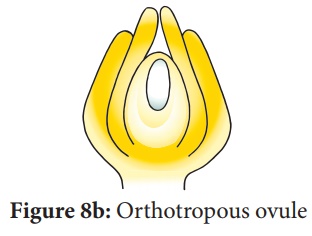Models / Photographs / Pictures | Botany Practicals - Types of ovules | 12th Botany : Practicals
Chapter: 12th Botany : Practicals
Types of ovules
Models / Photographs / Pictures
Exercise: Types of ovules
Aim: To recognize different
types of ovules in flowering plants
Principle: To identify ovules based
on the orientation, form and position of the micropyle with respect to
funicle and chalaza
Requirements: Models / Photographs/
Pictures of different types of ovules.
A. Anatropous Ovule
Diagnostic Features
·
The body of the ovule becomes completely inverted so that
micropyle lies close to the funicle.
·
Micropyle and chalaza lie on the same straight line. Example:
Asteraceae.

B. Orthotropous Ovule
Diagnostic Features
·
In this type of ovule, the micropyle is at the distal end.
·
The ovule is erect or straight so that the funicle, chalaza and
micropyle lie on the same vertical line. Example: Piperaceae and Polygonaceae.

C. Campylotropous Ovule
Diagnostic Features
·
In this type, the body of the ovule at the micropylar end is
curved and more or less bean shaped.
·
The embryosac is slightly curved.
·
The funicle, micropyle and chalaza are adjacent to one another
with the micropyle oriented towards the placenta. Example: Leguminosae.

Related Topics